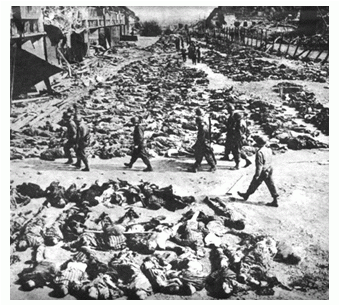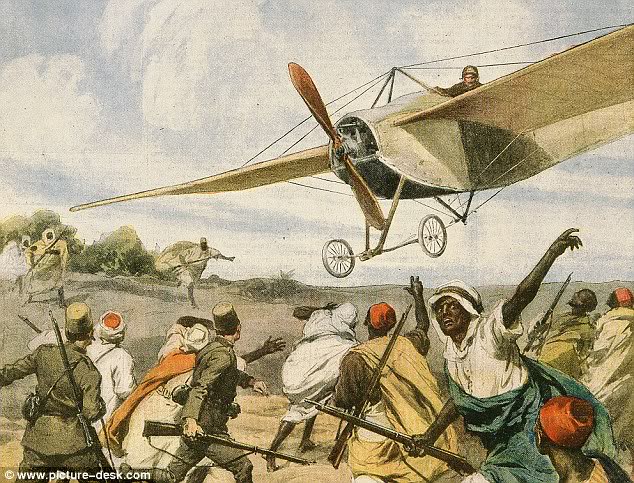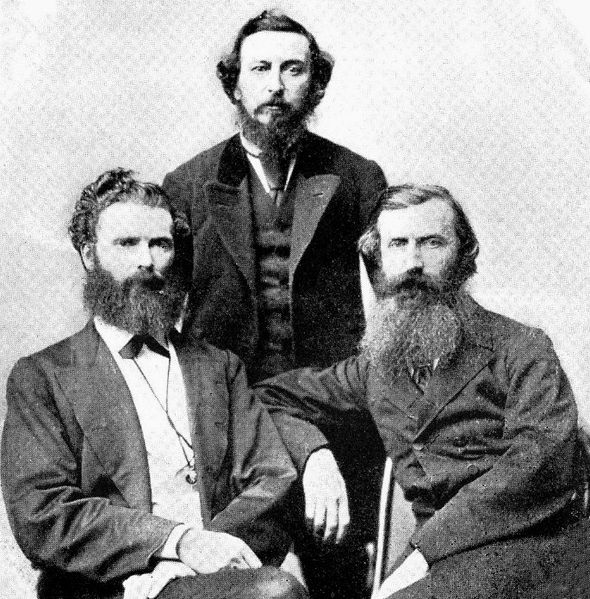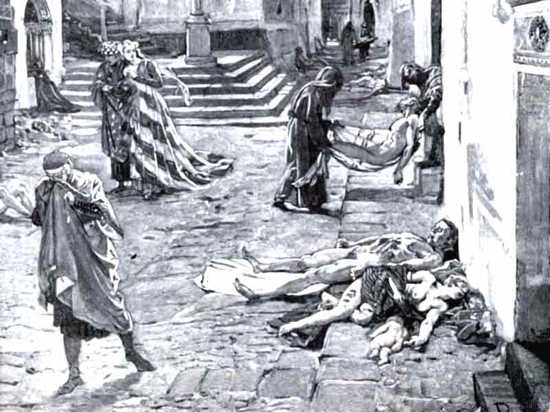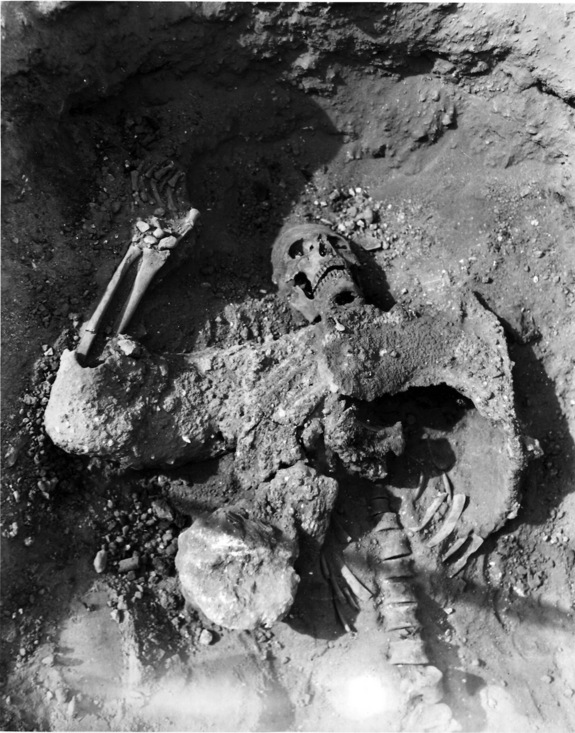When we think of “historical firsts,” we tend to think of the good stuff: the first man in space, the first man on the
Moon, or the first man to
eat 25,000 Big Macs. But there’s a whole other, darker set of firsts out there: unique instances of death, insanity, torture and murder that inspired disturbing trends. Here are ten of them:
10. First School Shooting
People have been getting shot in schools ever since there were schools and
guns to shoot them up with. But most of these shootings had an obvious target and an obvious cause. It wasn’t until the 20th century that the first madman strolled into a classroom and randomly began
firing on a group of children.
On June 20th, 1913, an unemployed 29-year old named Heinz Jacob Friedrich Ernst Schmidt walked into a school in Bremen, Germany, and killed four girls. A fifth died breaking her neck as she tried to escape. They were all between the ages of five and six. Several adults who tried to stop Schmidt suffered serious injuries, before a passing coachman entered the building with a pitchfork and beat him into submission. A true motive for the massacre was never established. As he was led away to a mental asylum, Schmidt was heard to cry, “This may be the beginning, but the end is yet to come.” In light of Newton and Sandy Hook, we now see how tragically right he was.
9. First Concentration Camps
In 1896, colonial Spain had a problem. Armed guerrillas were fighting to wrest Cuba from Spanish control and hand it over to the people. Fearing the loss of their island, Spain dispatched
General “Butcher” Weyler, who more than lived up to his name. Reasoning he had no way of knowing who were ordinary Cubans and who were fighters, Weyler decided to lock the entire population up in a little something he called “
reconcentration camps.”
Badly-maintained, lacking shelter, and almost entirely without food, the camps soon turned into mass graves. Starvation wracked the inmates. Disease swept through camp after camp. Hundreds of thousands of men, women, and children died. Those who refused to be interred were executed on the spot. All told, 400,000 civilians are thought to have died in what’s known as the “Cuban Holocaust.” Eventually,
pictures of these camps reached America, triggering a public backlash against Spain. Sadly, the horror of these camps would live on through 20th century copies like Belsen, Gakovo, Chacabuco, and Auschwitz.
8. First Airstrikes
In 1911, the concept of aerial warfare was still
science fiction: HG Wells even wrote a doom-laden book about it.
That all changed in Libya on November 1st. On that day, Italian airman Lieutenant Cavotti threw four bombs over the side of his plane and onto Turkish-held Tripoli below.
The next few weeks saw a campaign of semi-target “airstrikes” across the city. Arab bases had grenades dropped down on them. Turkish positions were pummelled. A field hospital was accidentally bombed, triggering international outrage. A short 30 years later, the same principal would be used to flatten first London, then Pearl Harbor, then finally major cities in Germany and Japan.
7. First Modern Terrorist Campaign
The roots of terrorism can be traced back to the first century BCE, but it wasn’t until the 1880′s that a group of angry dissidents decided to start randomly targeting civilians. Known as the
Irish Republican Brotherhood, they responded to British crimes in their home with a dynamite campaign that targeted the London Underground.
On October 30th, 1883, two bombs exploded on the Metropolitan railway line. One went off early and only succeeded in damaging the tunnel. The other scored a direct hit on a passing carriage. Four people were badly injured, with a further two dozen suffering minor injuries. It was the beginning of a terror campaign that would injure upwards of 80 people. Commuters were targeted, landmarks were bombed, and
newspapers attacked.
Despite the wide-reaching nature of the campaign though, the only deaths would ironically be those of the bombers themselves: on December 13th, 1884, three of the terrorists accidentally detonated a bomb they were planting on London Bridge. All of them were killed.
6. First Death March
We tend to associate death marches with
German and Japanese brutality in WWII. But their history has its roots a little closer to home: the first modern death march was conducted by
American soldiers.
The year was 1838. The US government had been quietly removing Native American tribes from the East for the best part of the decade. Often, these removals had resulted in their own fatal journeys. Yet it was the Cherokees under the watchful eye of General Scott who would experience the first modern death march.
At gunpoint, Scott forced tens of thousands of Cherokees to march for 1,200 miles into their new territory. Bad weather, starvation, and disease killed thousands on the way. It’s estimated today that 5,000 died on this march, murdered by a callous government. Those that survived found themselves many miles from home, with few belongings and little hope for the future. It was a brutal policy, but one that would be used against Native Americans
time and again for decades to come.
5. First Modern Revolution
The first revolution in history more than likely occurred at a time when we were all living in huts and had names like “Ug” and “Gug”. The first
modern revolution, on the other hand, we can trace to a specific date. Specifically, 1688, the year of
Britain’s Glorious Revolution.
According to UK historian Ted Vallance, this revolution can be classified as modern not just because of the insane levels of violence that accompanied it, but also because of the culture clash behind it. Vallance argues that all prior revolutions were about progressive modernizers clashing with traditionalists. Starting with 1688, they typically became about two groups of progressives clashing with each other, “culminating, usually violently, in the profound transformation of the state.”
In other words, it was the first time two groups wanted to change society so drastically that one had to dispose of the other to do it. The same happened in France,
Russia, Cuba, and every other revolution since.
4. First Biological Weapons
In 1347, Mongol forces were busy occupying themselves by laying siege to the strategically-important port of Caffa in modern Ukraine. Looking for new ways of harming the inhabitants, an unknown general ordered his men to place plague-infested bodies in the catapults and fire them into the city. Not only was this the first recorded
incident of germ warfare in history, it may have indirectly shaped the modern world.
According to the Encyclopedia Britannica, a number of traders at Caffa hailed from
Italy. There’s a good chance that these same traders quickly escaped home when they saw the plague sweeping through the besieged port, resulting in the Black Death reaching Europe. As we know, the plague then consumed the continent, killing as many as 25 million people and changing the course of history. Was one of the most devastating moments in European history down to nothing more than an inventive Mongol general? It seems shockingly likely.
3. First Chemical Warfare
Although it is most associated with World War I, chemical warfare still seems like a modern aberration: the sort of thing our ancestors would have considered with horror. So it can come as something of a surprise to learn we have scientific evidence of it being used
as early as 256 AD.
In 2009, scientists uncovered evidence of bitumen and sulfuric crystals at the remains of Dura-Europos City in Syria. The evidence was found at the exact spot where twenty asphyxiated Roman bodies were uncovered in 1930, painting a terrible picture of some forgotten battle. It’s now theorized that Persian invaders facing the Roman
soldiers in siege tunnels under the city burnt the crystals and used bellows to blast the toxic air into their enemies’ faces, causing unconsciousness in seconds and death in minutes. If true, it would be the earliest incident of chemical warfare for which we have evidence, some 1,800 years before the notorious battles at Ypres.
2. First Genocide
But it wasn’t just chemical weapons that were pioneered in Roman times. Genocide reared its ugly head for the first time in recorded history during the
Third Punic War (149-146 BC).
Fed up with the city-state of Carthage throwing its weight around, the Romans made the decision to utterly destroy it. And while the sacking of cities and murder of their inhabitants was not uncommon at the time, it was rarely this ferocious or so thought through. There’s evidence that the
Romans weren’t interested in simply gaining a tactical advantage or doing away with enemies, but simply
hated the Carthaginians so much that nothing less than their total destruction would suffice.
To that end, they laid siege to the city, slaughtered its inhabitants or sold them into slavery, and then proceeded to dismantle it brick by brick, eventually burning the remains to the ground so only ash remained. There’s even speculation that they may have poured salt over the Earth so nothing would ever grow there again, just to make sure their hated victims could never return.
1. First Gas Chambers
Today we associate gas chambers with the horrors of the Holocaust. But the Nazis weren’t the first to use this method to exterminate undesirables. That honor goes to the Turkish and Kurdish forces during the
Armenian Genocide.
In 1915, the Ottoman state set out to wipe every trace of the Armenians from the face of the Earth. Villages were rounded up and executed. Others were sent on death marches into the blistering desert sun. Yet others were taken into the Syrian Desert, where they became history’s first victims of the gas chamber. On their captors’ orders, civilians were herded into a large cave. The Turkish forces then pumped the cave full of smoke until everyone inside was dead from asphyxiation. It’s estimated that thousands died in this manner.
In a particularly grim piece of
irony, the German troops allied with the Ottoman Empire complained to Berlin about these atrocities. The Reichstag expressed shock that any nation could be so cruel towards defenseless citizens. Less than 30 years later, the ovens at Auschwitz would open their doors, signalling the death of 6 million Jews.



























